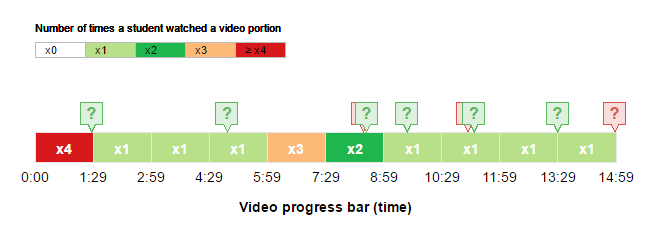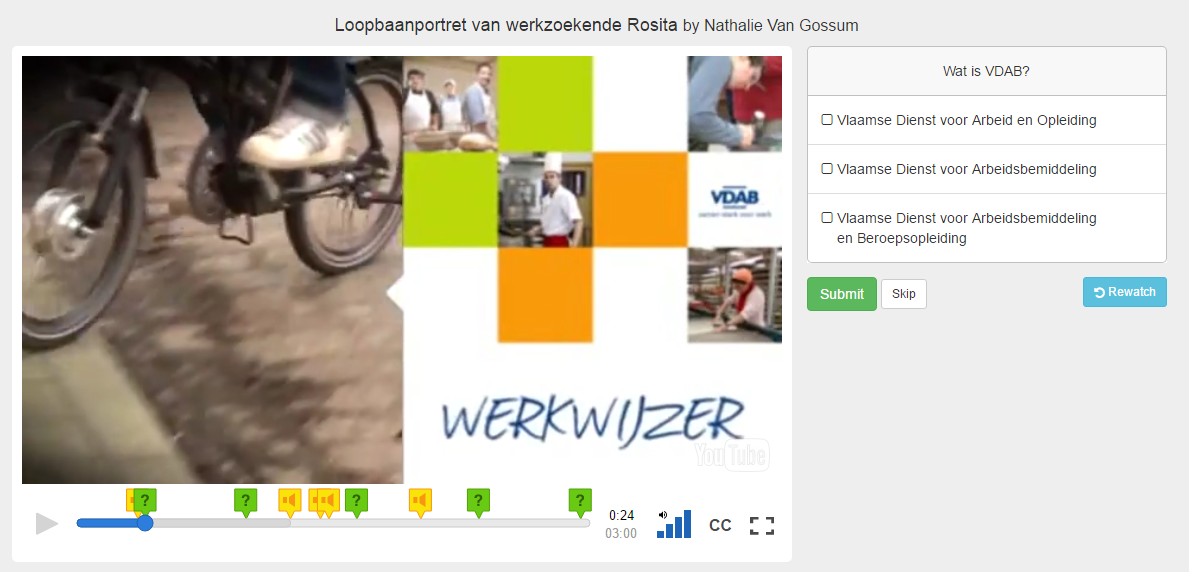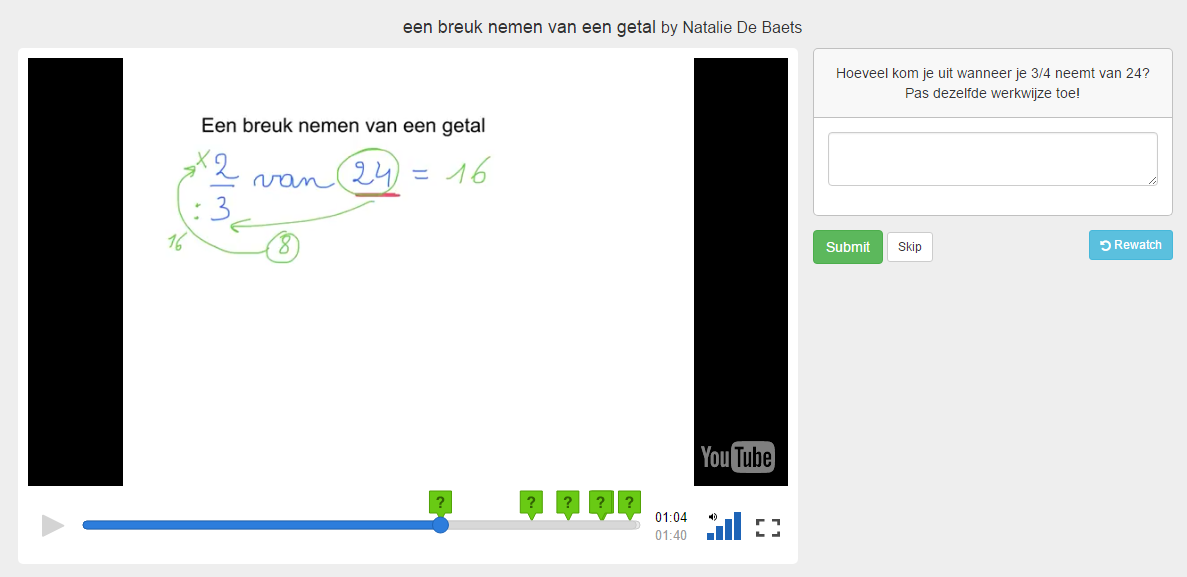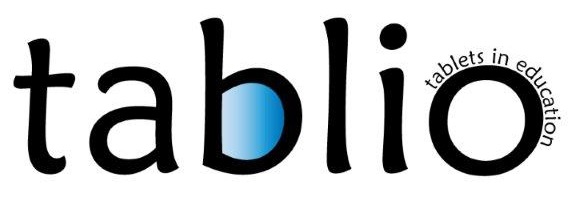Listening activities at the student’s pace

Listening represents an important part of communicational skills, in native language as well as in foreign language education. While listening activities are a piece of cake for one student, they can be a really obstacle for another one. The conventional approach organises listening activities on class group level and each student hears an excerpt as often as any other student. Stronger students then have to listen to an excerpt twice, while they don’t really need it. For other students, hearing it twice might not be enough and they might succeed if they could hear it one more time. Another category of students might only need to listen to some of the excerpts for a second time. (student’s readiness). This good practice responds to this problem by giving the students the opportunity to listen to the excerpts in a flexible way (process – differentiation).
Sarah Awouters is a teacher in the 7th year of vocational education. Her group is very heterogeneous. Students who spent their entire secondary school career in vocational education, have never had any English lessons. Other students coming from general or technical education, have had a couple of English lessons a week for a couple of years. (student’s readiness)

To adapt to these differences, Sarah uses the EDpuzzle app. Edpuzzle is a free, device-independent tool that can be used to shorten videos and provide them with sound recordings, open questions, multiple choice questions and comments. After the teacher has edited the video, he or she creates a virtual class in EDpuzzle and adds the edited video to that class.
Subsequently, a class code is generated. When the students open the EDpuzzle app, they can log in with this code and watch or listen to the edited video and answer the questions. EDpuzzle offers the possibility to click ‘watch again’ after every question to watch the last excerpt once more before answering the question. This makes it easy for students to determine their own pace. (student’s readiness and profile)

Image 1 : Video with questions in EDPuzzle
Via the app, the teacher gets a structured overview of the students’ scores, the answers they gave ánd the number of times they watched a certain excerpt. He or she can evaluate the answers to the open questions and give comments. Afterwards, when the students log in again, they can see their scores and the feedback the teacher gave them.

Image 2 : immediate feedback for multiple choice questions
Via a simple colour system the teacher can quickly assess which students have inadequate, sufficient or very strong scores. This offers the opportunity to proactively adapt to the differences between students during the next class.

Image 3 : overview of the students’ performance for the teacher
Sarah testifies : ‘I mainly use it for English-spoken video excerpts which I use as listening activities. The questions vary from open to multiple choice questions. I always check how many times a student watched a certain excerpt before he or she found the right answer. Afterwards, the exercise is discussed orally and we jointly try to find out what exactly caused the student trouble.’ Students sometimes need some encouragement to watch an excerpt twice, but when they do, they find the right answer. Sarah’s students like the fact that they get the opportunity to watch excerpts several times. The more they watch it, the more they learn, which makes it a win-win situation for both students and teacher.

Image 4 : The progress bar shows how often a student watched certain excerpts and which questions have been answered correctly or wrongly
Sarah applies her way of working to her evaluation. ‘Because the school still works with a –to my opinion- outdated system of written exams on class group level for English, I wanted to focus on all skills by introducing an oral exam. Before the exam, students had to watch an episode of National Discovery via EDpuzzle about the future of trains or a news flash about the scandals in which Hilary Clinton was involved. They could choose the subject that interested them most. After watching one of these episodes, they had to choose a corresponding text and read it in preparation of the oral exam.’ (learner orientated classroom differentiation, student’s readiness and interests).
Sarah says : ‘There was one big advantage to this. Based on the results in EDpuzzle, I could deduct which questions they found hard and how many times they watched certain scenes before finding the right answer. I used this information to determine the questions for the oral exam after which the text was linked to this episode.’ (teacher orientated classroom differentiation)
Written reflections afterwards show that students had really enjoyed this way of studying before an exam and that they had found it really interesting.
Sarah finds the app very user-friendly, for teachers as well as for students. Sarah’s approach does require, of course, that each student has access to the app and that headphones are available for listening.
The idea to work with EDpuzzle to practice listening skills was shared via the mooc by Tablio (www.mooctablio.be). Teachers from different educational levels and different studying areas picked up the example and applied it in their classes. The examples below prove that the described application is transferable.
Nathalie Van Gossum integrated listening skills in her social education classes and taught a lesson about the search for a job. This way, students trained their listening skills at their own level, but at the same time found out some interesting information about looking for a job.

Image 5 : Career portrait of job-seeking Rosita
Nathalie also uses EDpuzzle to tackle shortcomings when it comes down to numeracy skills. She has a couple of students with arithmetical problems. Those who haven’t quite understood the explanation during class, can take another look at the instruction that was given during the lesson afterwards. Thanks to some additional questions, students can independently practice the material at home or in the classroom.

Image 7 : video instruction numeracy skills via EDpuzzle
Olga Kooistra made an application for pre-schoolers. She recorded a video in which she read from a picture book. The children get to hear a question and have to choose the right answer by clicking the right picture. This application has been developed to improve listening comprehension and enrich the children’s vocabulary. You do need a few tablets in the classroom to put this application into practice. Some of the pre-schoolers might choose to make this exercise in a corner of the classroom. Moreover, this is a perfect way to coach pupils with language deficiencies.

Image 6 : a visual listening activity for pre-schoolers
